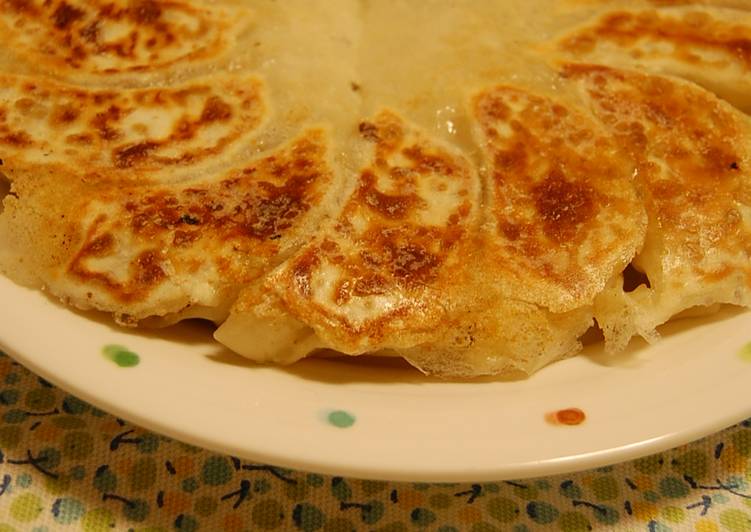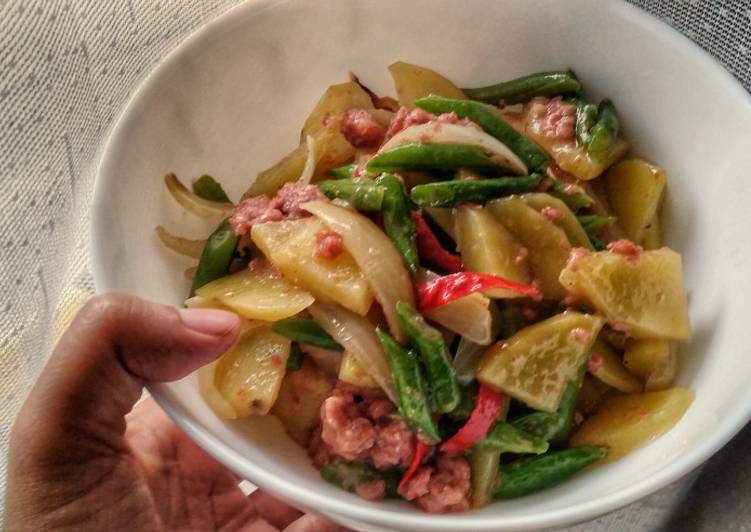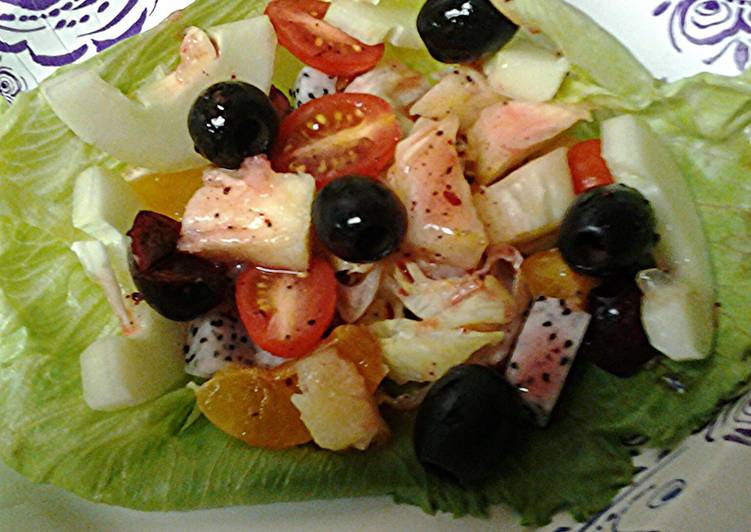
Hello everybody, it is me again, Dan, welcome to our recipe page. Today, we’re going to make a special dish, healthy macrobiotic vegetable gyoza. One of my favorites. This time, I will make it a bit unique. This is gonna smell and look delicious.
These Vegetable Gyoza are stuffed with a delicious mix of tofu, cabbage, carrots, and shiitake mushrooms. With golden crisp bottoms, fresh juicy filling, and homemade dipping sauce, it's love at first bite! You don't have to be vegetarian or vegan to enjoy these Japanese pan-fried dumplings.
Healthy Macrobiotic Vegetable Gyoza is one of the most popular of recent trending foods on earth. It is enjoyed by millions every day. It’s easy, it’s quick, it tastes yummy. They’re nice and they look wonderful. Healthy Macrobiotic Vegetable Gyoza is something that I have loved my whole life.
To get started with this particular recipe, we have to first prepare a few ingredients. You can cook healthy macrobiotic vegetable gyoza using 13 ingredients and 8 steps. Here is how you cook it.
The ingredients needed to make Healthy Macrobiotic Vegetable Gyoza:
- Make ready 30 Gyoza wrappers
- Make ready 2 Koya-dofu (freeze-dried tofu)
- Prepare 5 leaves Cabbage
- Take 1 knob Ginger
- Prepare 15 cm Green onions or scallions
- Prepare 1 Spring onions or scallions
- Get 70 grams Maitake mushrooms
- Take 1 large, King oyster mushroom
- Make ready 1 tbsp ●Soy sauce
- Prepare 2 tbsp ●Sesame oil
- Make ready 1 tsp ●Beet sugar
- Get 1 tsp ●Vegetarian Chinese stock powder (optional)
- Take 1 tsp at a time ★Plain flour (dissolved in water) to finish pan frying
Gyoza is one of the most popular Japanese home cooking recipe. It's family friendly recipe and typically children learn how to wrap it at their kitchen. Vegetable Gyoza Recipe Gyoza is dumplings, usually ground pork or chicken and vegetables wrapped in round (fresh pasta like) flour skins and pan-fried. Gyoza is originally from Chinese fried dumplings, but it is so popular and rooted well in Japanese cuisine today.
Steps to make Healthy Macrobiotic Vegetable Gyoza:
- Soak the koya-dofu in water to rehydrate. Put the cabbage into a food processor to chop. Transfer the chopped cabbage into a bowl. Sprinkle with salt (not listed in the ingredients) and leave to sit for 20 minutes. Squeeze out the water from the cabbage.
- Pulse the koya-dofu in your food processor, transfer to a separate bowl, and set aside.
- Put the green onions, spring onions, king oyster mushroom, and maitake mushrooms into a food processor and chop finely. Grate the ginger.
- Combine the ingredients from Steps 1, 2, and 3 with ● seasonings in a bowl and mix well. Wrap the mixture with gyoza pastries and pan fry.
- [Tips for frying:] Heat some sesame oil (not listed in the ingredients) and arrange the gyoza in circle. Fry over medium heat for 4 to 5 minutes. Agitate the frying pan occasionally.
- After the bottom of the gyoza has browned, drizzle over a slurry of 50-60 ml water and 1 teaspoon ★ plain flour. Cover with a lid and reduce the heat to low. Continue to fry for about 3 minutes.
- Uncover the lid and turn the heat to high. Evaporate the water and cook until crispy. The gyoza with crispy bits are done.
- This packet of Chinese stock powder is vegetarian, but if you can't find it, simply omit it.
Great recipe for Healthy Macrobiotic Vegetable Gyoza. I attempted to make tasty meat-free gyoza and came up with this recipe. Without using any meat, you can make tasty gyoza. The outsides are crispy and the insides are soft and mild-flavoured. I use thin onions but you can use Chinese garlic.
So that is going to wrap it up with this special food healthy macrobiotic vegetable gyoza recipe. Thanks so much for reading. I am confident that you will make this at home. There’s gonna be interesting food at home recipes coming up. Don’t forget to save this page on your browser, and share it to your family, friends and colleague. Thanks again for reading. Go on get cooking!


